|
Over the past few months my brain has been absorbing all kinds of information. I believe that continuing education is so very important in dog training, canine fitness and well in LIFE. For me, I go through stages where my brain is full and I couldn't possibly put more into it and then all of a sudden it is time to open up the doors for learning again.
Here is what I have been up to:
There are always natural learning opportunities but sometimes you have to seek them out and schedule them into your life. If may not be easy but it IS totally worth it. Consequently - Drama and I have trained a lot. The training assignments required through KPA are quite extensive. I had to be very careful to keep Drama's arousal and environmental sensitivity at a managed level. Not that I didn't do that before but with the number of training exercises in short periods of time that were required, it was important to be very careful about how much pressure I felt and applied to him. I am proud of what we have accomplished together. We are a team and our communication and training will just keep getting better and better as we grow and learn together. Bobbie Below is a combination exercise that on the "surface" may seem relatively easy but I believe that we must look at it from the dogs perspective and train each "movement" individually before asking our dogs to complete complicated exercises. This is an equipment combination that I used in my Fitness with Focus class BUT these particular advanced exercises were not shown. I decided to put in a blog post because I believe it demonstrates how complicated exercise can be "for our dogs". We need to advocate for our dogs and stop tossing them under the buss! Train each movement, each piece of equipment and each exercise individually so that our dogs truly understands what is being asked. Our dogs do a GREAT job of "guessing" what we want. Or they "follow a lure" to the next piece of equipment or to the next movement. When they guess or follow a lure they are not activating the right muscles to stabilize on balance equipment because their body is moving by their nose or off the handlers movement. Once your dog starts to truly understand what you are asking, you will see a major shift in their fitness. Your dog will become stronger, move better, stabilize their movements in all direction AND the chance of injury will be reduced. Basic foundation skills:
There is a lot that goes into the training of each exercise and each piece of equipment you use. If you are unsure of how to train a combination exercise or what the foundation skills are - ask. I am always happy to tell you. Please enjoy the video. Ask questions if you like, pass it on to others and think about what you are asking of your dog. Bobbie Sign up today for Live Online lessons. One lesson is $100 USD or you can get FOUR lessons for $350 USD ($50 off). When you decide on lessons from me, you will get FOUR 60 min lessons via Zoom (like Skype - it's easy. I will talk you through it). My students have really enjoyed these lessons while learning how to properly strengthen their dogs. Having a trainer in your back yard or living room to give you REAL time feedback is super beneficial and via the internet, I can be there with you. Four lessons allows us to build on what you and your dog already know, teach needed foundation skills and design a plan specific to you and your dog. I am not in the business of selling you equipment so we will use what you have and things you have around your house. I may suggest equipment for a specific strength exercise but it I will do my best to use what you have. Lessons can be scheduled during the day or some evenings.
What you get:
In July I drug Danielle Hall to Germany to teach workshops but before we started we did have a few days to see some sites. We got to Germany on Thursday after many hours of traveling. On Friday our awesome host Carmen Heritier (check out her book Gymnastricks) took us site seeing here: www.pfaenderbahn.at/en/ On Saturday Sandra Rutz took us by catamaran to the beautiful city of Lake Constance/Kontanz. We wondered around the City and took photos. The architecture was amazing and the lake was beautiful!! On Sunday Carmen took us to Meersburg Castle (the first Castle I have every seen in person). To see something that old, feel the depth of what life was like all those years ago was simply amazing. THEN - we did Danielle's dream - yep horseback riding through the fields and forest in Germany. Danielle is a much more accomplished horse back rider than I am. She probably would have had a bunch more fun if she would have left me behind. It was a slow, fun and a scenic ride. Then Monday - Thurs we taught some really awesome people and dogs all about K9Fitness!
Mon - Foundation work and cavaletti (both 4.5 hr workshops) Tues/Wed - 2 day Advanced - program design, equip combos, injury prev Friday - Senior/Puppy and private lessons The students and dogs were fantastic to work with and our host couldn't have been better. Carmen treated us like Queens and tended to ALL our needs. Even got Danielle a pharmacy of cold medicine when she was sick the last couple days. My pal Inge Dillen of Nimble-K9 - brought the amazing Nalu to demonstrate. It was so great being able to spend time with her again and talk fitness. Here is a smattering of photos from the workshops. Summer always seems to go by fast, I hope you all enjoyed your Summer!!!! Bobbie I started teaching K9Fitness and body awareness with dogs just under 13 years ago and I had no idea where it would take me. I didn’t have a path in mind, a goal or even an inkling that it would be my DREAM, my FOCUS and full time job. I am so thankful to be able to share what I love and continue to learn and grow as my clients and the industry pushes me to be a better fitness coach and a better dog trainer.
Independent cued behaviors will encourage proper movement, strength and mental focus. When I first started training, much of it was done by luring and movement off body pressure. I quickly realized that shaping behaviors for fitness gives the dog time to think about their body and allow their muscles, joints, and limbs to respond to what is being asked. I still teach using luring, targeting and body pressure but my goal in fitness is always that the dog is able to offer the work with focus on the exercise at hand and not food in YOUR hand. I want to “put it out there” that we can do better – we can be better teachers and better teammates to our dogs. After all, we are working with fully functioning healthy dogs that are mentally and physically capable of learning the process if we take the time to teach them. Shaping using a clicker is fun and it truly teaches your dog something that they will remember and be able to offer forever. We can do better by teaching our dogs the foundation steps to every exercise with methods that encourage our dog to think about their body during the process. Quite often dogs are asked to do a more challenging exercises than they are mentally and physically ready for based on the equipment the owner has and a video seen on Facebook or YouTube. This is done without any thought to what the dog should understand or the strength that needs to be established before proceeding with the movement or static position. Teaching each step and each movement prepares your dog mentally and physically for each exercise challenge presented. Starting JUNE 1, 2017 - I am offering Shaping K9Fitness, a 3 mo long class June/July/Aug – my new Facebook class. This class will inspire you to shape some or all of the behaviors for a multifaceted exercise combination each month. I decided to offer this class in an effort to have REAL fitness and training discussion about strength and body awareness exercises. It is offered on Facebook to make the class and discussion easily accessible by mobile device and/or computer. Learn how much MORE you can accomplish with fitness by putting behaviors on cue and allowing your dog all the steps to gain the strength and knowledge for each exercise. Will everything be perfect and set in stone – NO. I want this class to be more of a discussion, a collaboration of sorts to find all the great ways to shape and capture behaviors. I have ideas and they are GREAT but they are not the only way. I am always learning from my students, they are great trainers. Learn from me, teach me and let’s work together for our dogs. Sign Up HERE I often get asked what my “fitness and training” philosophy is. My standard response is:
“Using a variety of methods, I train strength and body awareness exercises that activate more muscles in the dog’s movement, while moving the dog equally on both sides and in all directions, which inspires efficient movement with less effort and decreases the chance of injury” Bobbie Lyons, CCFT, FP-MTI, Cert C.F Just thought I would share my philosophy. I can’t speak to other philosophies, I can only tell you mine. I use a variety of training methods: shaping, luring, targeting, molding, capturing – all methods that positively reward the dog with food or toys for the desired behavior. I have students that use one or many of the methods mentioned and I support them all in my classes. I may show a behavior using hand targeting, by showing the steps with shaping or by luring a behavior – but that does not mean that each student has to use the method I use. Again, I support the methods mentioned above and will do my best to help you achieve the desired position or exercise using the method that works best for you and your dog. That said, if you are willing, I may open your mind to other training methods such as the advantages of shaping, luring or targeting while helping to decrease the amount of food used so that your dog’s pays closer attention to their body and movement. We all learn in different ways, have different goals, or training methods. Finding a method and trainer that works for you and your dog’s and/or your clients is important. Also, understand that there is always something to learn. Entertaining different perspectives can help you grow in your knowledge, give you more training tools, and give you food for thought. NOTE: I strive to shape behaviors and movements, put the behaviors on a verbal cue and encourage independent movement. That said, not all fitness exercises can be trained as a "trick" because sometimes the position may be hard or impossible to obtain as an independent behavior, in the correct position, when targeting a specific muscle group. I just thought I would share my philosophy, due to requests for this information:) Here are a few options for learning more about K9 Fitness. Online consult with Bobbie Lyons, CCFT, FP-MTI, CERT CF – via LIVE training via Skype/Facetime/Join.me or other service. During live lessons, I can guide you in real time, adjust your training to get the desired behavior and design a strength program specific to your dog. A written recap of the lesson will be sent to you along with a recording of the live lesson. MT/CCFT program – designed to teach you to evaluate your own dog or client’s dogs for fitness activities and to design targeted exercises programs for your dog using FitPAWS equipment. Take an online Class - of course I would love for you to take my classes but there are many out there to choose from. My NEW Fitness on the Flat (no equipment needed) and Warm UP/Cool Down/Flexibility class enrolls 2/1/2017 Equipment inflation has come up a lot lately in my online classes and even my private lesson clients. Some clients will bring their equipment to me so I can adjust the inflation appropriately for their dog and the exercises in their dog's current exercise program. Some folks don't know how to take air out and even some are unsure how to put air in. Let me clear that up for you..... Rules of thumb for inflating and deflating
Depending on the size of the dog you are working with, the dog's level of strength/fitness and the exercise you are working on, taking air out or adding air in can increase or decrease the level of difficulty for your dog. This is NOT standardized but in general these two things "can" be true.
If your dog is struggling for balance and is unable to find balanced quickly - either equipment inflation needs to be adjusted or you have asked for an exercise that is above the dog's level of fitness. Equipment inflation is a little like "goldilocks", sometimes you have to "test" it out to see if the inflation is "just right" for your dog. If you put 5 Fitness Coaches in a room and you ask them "is more air or less air easier" - you will get a debate that won't end because the answer depends on the size of dog, the dogs level of fitness AND the specific exercise you are trying to perform. If you are trying a new exercise and your dog is really struggling - don't be afraid to adjust the air in your equipment. I feel that that increasing or decreasing the air in equipment is an under utilized tool and I want to encourage you to use it. Another option is to just buy more equipment and have a different amounts of air in each piece. For example:
Below are two photos to show you some different inflation options for the FitPAWS Giant Balance Disc and the FitPAWS K9FITbone. When looking at the bones - look at the "shadow" under and around the K9FITbones to help you determine what is different about the inflation. Left - more inflated, Middle average and Right deflated
If you got my newsletter, then you have already read this but if not - ENJOY!
Recently, a person I respect a lot asked me for ONE THING that I would change or do better. For some reason this question was really floating around in my mind in the weeks that follow. Then a trainer told me that I often “skip steps” or “jump ahead” in my training. Now interestingly enough, these two instances were NOT related but in my mind they really got the wheels turning. If I were to train ONE movement or behavior one step at a time then the end behavior will be stronger AND my dog will better understand what is expected. Hmmmm….Interestingly enough, I thought I was training each step until I really sat down and started dissecting each thing I was currently training Drama to do. Drama is a very operant dog who is willing to try anything - good thing because I have skipped some steps here and there. After some reflection, I found that if there are five steps to training a behavior, I might do 1, 3, 5 instead of every single step, which creates grey area for my dog that supports a “sloppy” behavior or a behavior that needs to be supported. I get the behavior I want but it is not as polished as I would like it to be. When I spend the time to train each step independently my dog truly understands what I am asking of him and there is no GREY area. WOW what a concept. I have always considered myself a good “trick and focus” trainer (after all, Drama is a Trick Dog Champion TDCH) but I believe that if I train each behavior or movement with all the steps in mind, it will make me a better trainer and help my dog to understand what I want. It might even take less time and effort to train the behavior even though there are more “steps”. My clients will benefit as well from this knowledge and encouragement to break each exercise down into steps that their dog can easily understand and follow. Not that I didn’t take steps before but I feel that more steps can be taken to train each exercise in an effort to help the dog understand and engage more muscles in their movement. If I can help each person break down desired behaviors or movements into MORE steps, it will help to slow down the dog, engage the right muscles, encourage balance and coordination as well as encourage better defined body awareness. This all got me thinking about how my clients “inspire” their dog to do specific behaviors or movements needed for each fitness exercise. I believe that people often reward many things while trying to get an exercise trained especially if luring the dog. If you are constantly feeding your dog, then your dog is not really “learning” – your dog is following the food. That said, even if you are luring, you can reward ONE behavior at a time to help your dog understand the “steps”. It is not necessary to be feeding your dog 100% of the time, and in fact it can be confusing to your dog as well as counter-productive in most situations especially when training canine fitness. I often tell my students to take the food away, reward less often, turn their lure hand backwards and to use a nose touch or nose touch hold instead of a food lure. These things all can work but I feel that if we start looking at “training ONE thing at a time or ONE step at a time”, it will work even better. With all that said:
I hope this post inspires you to have a plan, break things down into steps for your dog, reward ONE thing at time, identify proper reward timing when chaining two or more trained behaviors together and to put each trained behavior on cue. Bobbie There are many approaches to K9FITNESS:
If you know me or have been following me, you know that I subscribe to progressive steps starting at the foundation level and moving slowly into more challenging exercises. Why? I believe that if the dog understands how to use their body efficiently, understands where their body is in space, and how to engage their core, then strength training can be skill based while targeting specific muscle groups. Without a proper foundation of body awareness and muscle engagement, it leaves our dogs at risk. So many dogs get tossed into the deep end of the pool because they are asked to perform exercises that are beyond their current level of fitness or capabilities. Taking the time in the beginning to train the foundation will save you time, frustration and possibly an injured dog in the future. It is important to assess where each dog is, what they already know and what needs to be taught to increase the efficiency of the exercise chosen for that dog. Every dog I see, starts with foundation exercises - this is to protect the dog's muscles and joints and encourage injury prevention. Some dogs will progress quickly as their owner just needs to "refine" movements or behaviors they have already trained. Some dog's will start at the beginning and it may take a bit longer. Fitness is not a sprint - it is a marathon. Here is one foundation exercise shown in my class and also presented at the live lab for the CCFT/Master Trainer program: To start your dog off on the right track join my online Foundation K9Fitness class available now for just $59 - two week self guided class with 14 movements or behaviors.
As an instructor for the CCFT program (Certified Canine Fitness Trainer/FitPAWS Master Trainer Program) I am proud of what we have put together, honored to be apart of it and humbled when the students achieve success. This program teaches how to assess the dog, when to refer to a veterinarian, how to choose exercises, what are signs of fatigue and how to increase the level of exercises based on the capabilities of the dog. Online and in person training required. 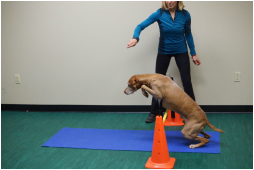 I get emails or messages on Facebook daily asking me, is this safe or that safe or what do "I" think about "this" or "that". Although I do have an opinion, my first question is always - "What is your goal and how will the exercise help you achieve it". What I am finding is that many folks don't really KNOW what their goal is, they just think the exercise might be fun to train or it is "flashy" and their ego would like their dog to do it. Step away from what is new and shiny for a few minutes and consider the information below. Always remember when watching a video or seeing a photo, that EVERY exercise has foundation steps required to "build up" to a harder level. If you don't understand the foundation steps required for an exercise, ask the person who posted it. Starting at the foundation level is your dog's best chance for staying free of injury and learning how to engage the proper muscles to support strength training activities. When considering an exercise for your dog, be mindful of these things:
In addition to looking at your dog, the handler must know a thing or two:
All of these things should be considered before starting any exercise program or trying a new exercise with your dog. Our dogs are amazing creatures and a good number of them will do whatever we ask of them, even if they think we are crazy. If you ask for an exercise that is beyond your dog's current level of fitness pushing them to much or to fast, will lend to injury. PLEASE NOTE: Not all exercises are right or intended for all dogs. Always remember to train the foundation behaviors that prepare your dog for higher levels of fitness. It is important to understand your dog's signs of fatigue as well as signs that it is time to increase to the next level. __________________________________________________________________________________ Education Courses: CCFT - Certification The information available out there is abundant but as an instructor for the CCFT program, I can assure you that it will teach you exercises philosophy, how to design a progressive fitness program, proper posture and position, equipment combination, how to assess your dog and others, signs of fatigue and will give clear boundaries for "taking it to the next level". The FitPAWS Master Trainer LIVE Program, together with the University of Tennessee online course, will earn you the first university backed certificate of Canine Fitness - CCFT. Bobbie Lyons Online Classes - These courses are designed to teach proper form and function of each exercise for strength, improved performance and injury prevention. Jumping Power - Strength training and program design specific to jump training - Enrolling 4/12 K9X Training - Foundation skills, progression of exercise, equipment combos - Enrolling 4/12 Injury Prevention for Psoas and Shoulders - enrolling in the Summer Walk the Way - DogTread Treadmill Class - trot work and strength training - Enrolling in the Summer I have trained the nose touch for many years, however Drama is the first dog where my goal is a “sustained” nose touch. With my other dogs, the criteria was to just touch my hand, which resulted in varying degrees of “pecking” or “touch and go”. I used food in the hand I wanted touched for a period of time to obtain the behavior.
A sustained nose touch can be a benefit in many areas of K9 Fitness and general training.
MY GOAL: Once a sustained nose touch is obtained, my goal is to be able to move my hand and have my dog “follow” without releasing the hold. We have this now after just a few sessions but need to build into many different training environments. With the above list in mind, it is important to have a “soft” nose touch that is sustained rather than a “pushing” motion. A soft sustained nose touch will allow the handler to slowly shift the dog’s weight, ask for position changes and allows the dog to focus on their body and limbs vs a food reward. What I have learned about teaching a sustained nose touch Foundation do’s and don’ts
Building a HOLD
The trouble I had is getting the behavior to be sustained. Drama has always wanted to “peck and move away” instead of hold the behavior. I consulted a friend about this and she told me to move my hand toward Drama as noted above, which did improve the behavior but still wasn’t getting what I wanted. Then when in the UK at the FitPAWS Master Trainer Program, I noticed one of the volunteers had a lovely soft sustained nose touch, so I asked her how she trained it. Bingo – “wait him out“ - the real answer here is to have patients and wait for your dog to offer the touch and then build duration. Often I get in a hurry and forget critical steps to building solid independent behavior and then later realize that refining a behavior or trick is needed. I feel very fortunate that I have wonderful friends, clients, and trainers available to me to remind me to slow down and offer suggestions to help improve my training. Not every suggestion will result in what I am looking for but not every training tool works for every dog. These "tools" that are offered are just that, tools to add to your tool box of training methods that will result in being able to help many dogs, not just my own. ~Bobbie |
AuthorBobbie Lyons, CCFT, KPA CPT Archives
April 2019
Categories |
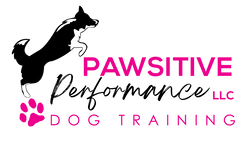

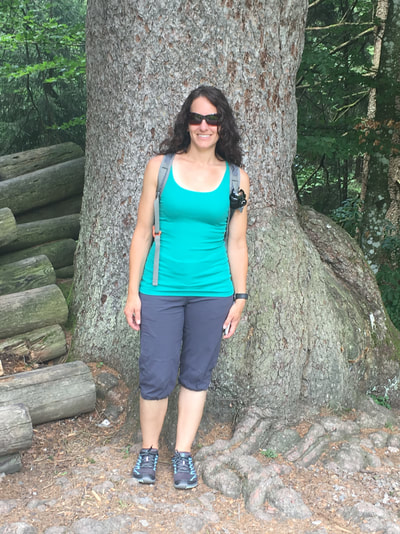
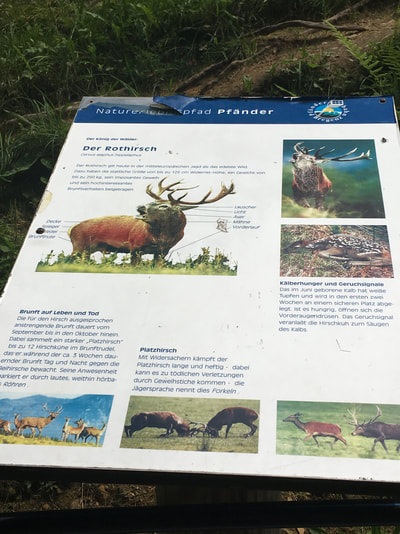
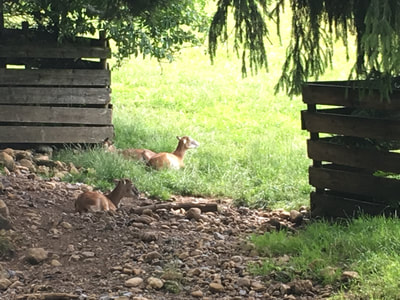
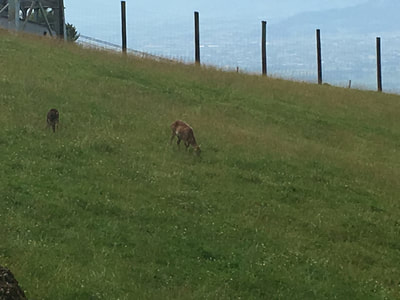

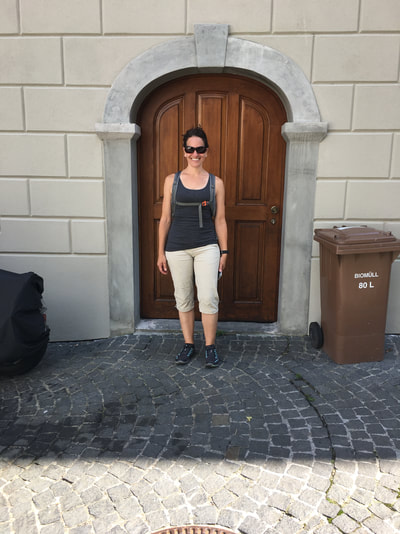
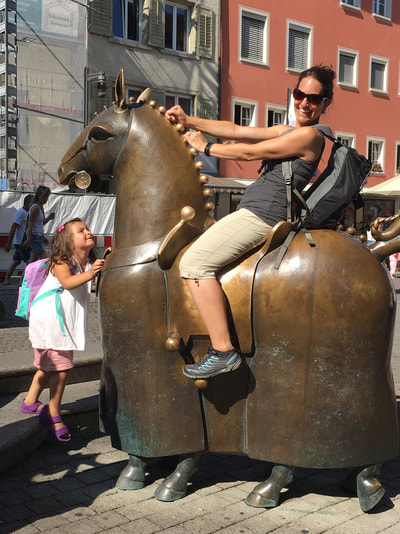





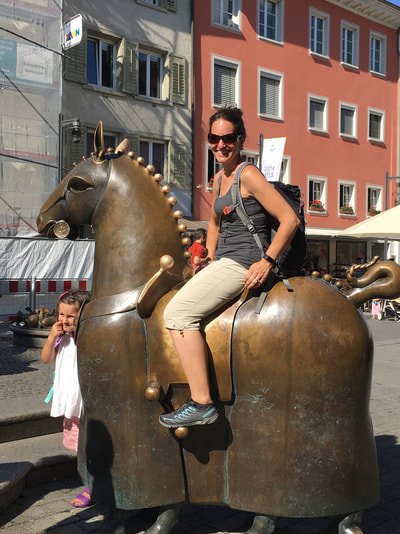





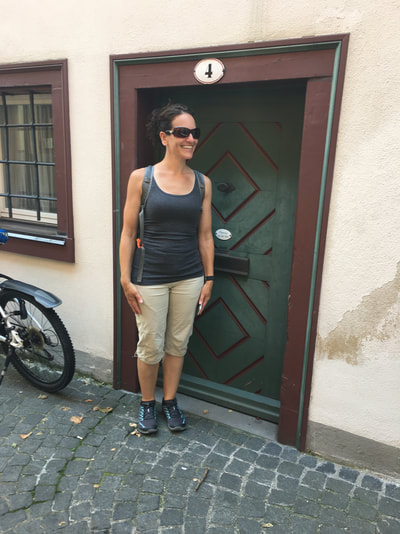

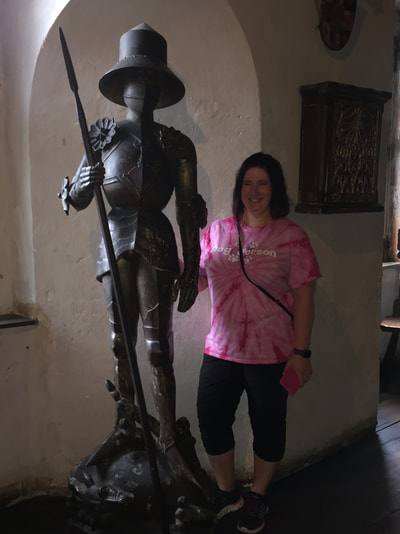
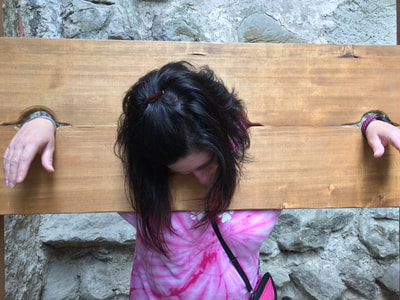


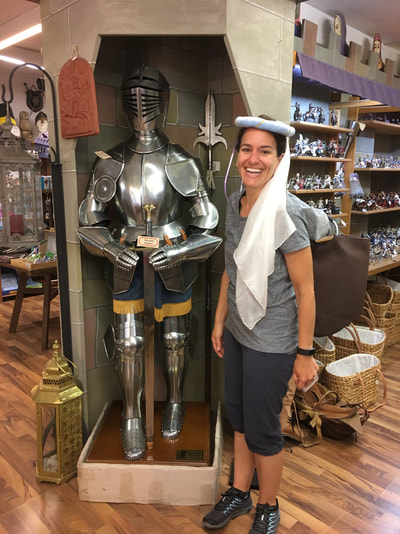

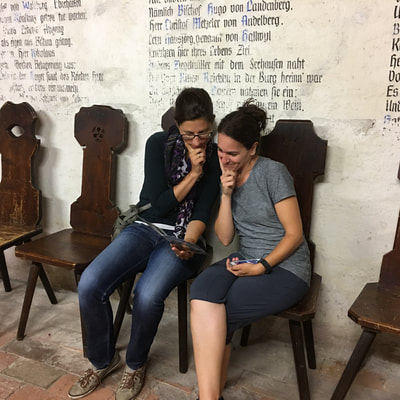
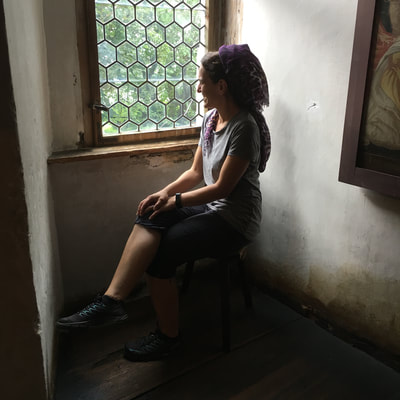

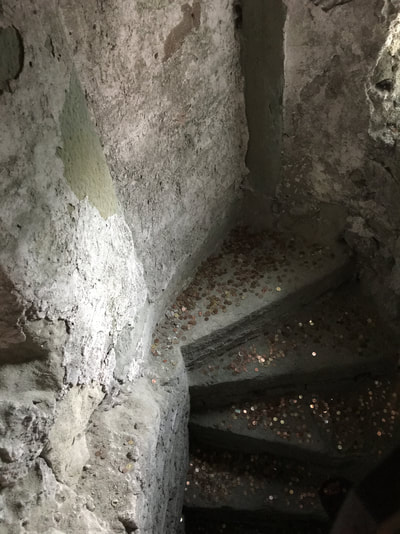

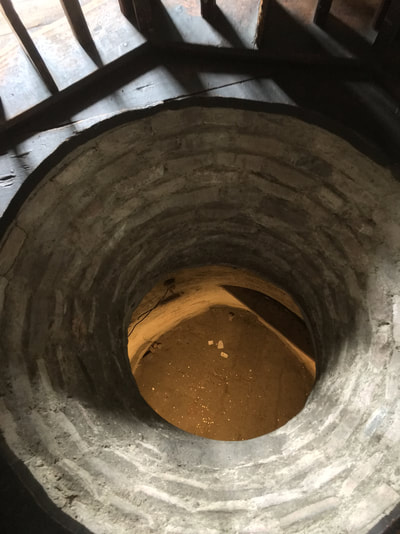







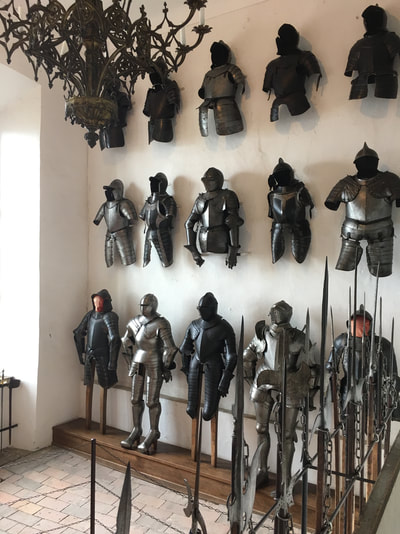

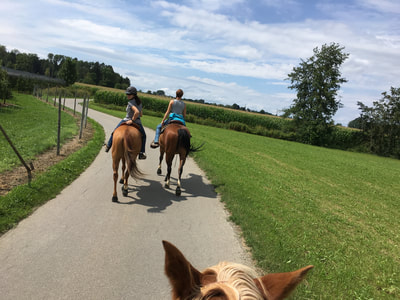
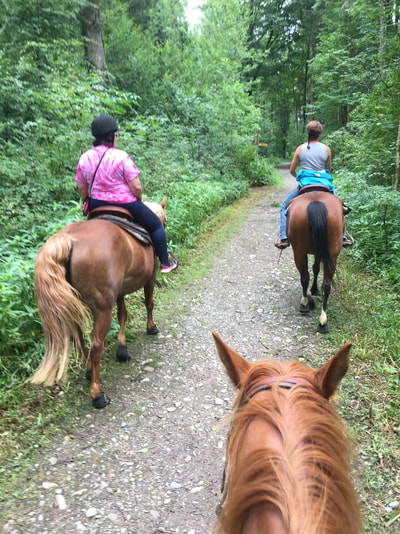
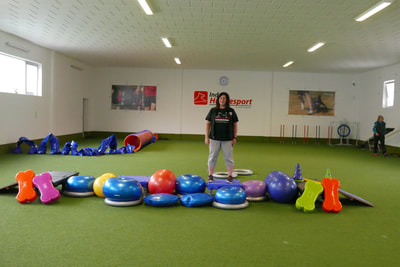
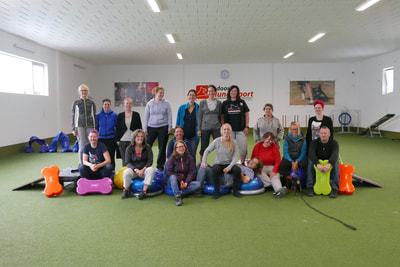
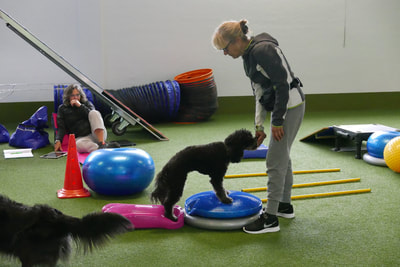
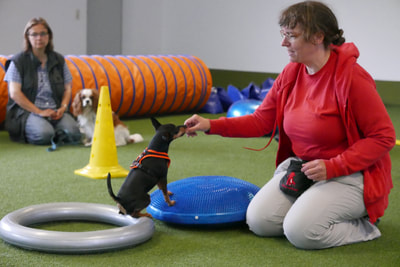

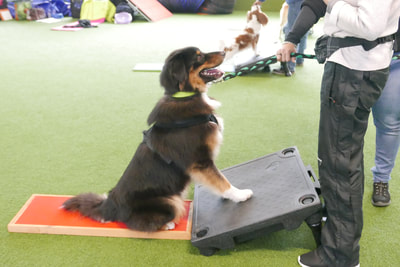
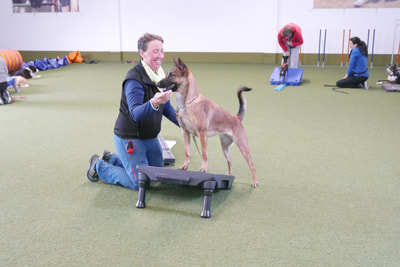
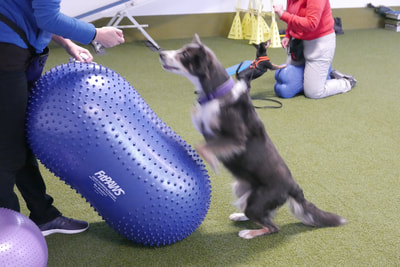
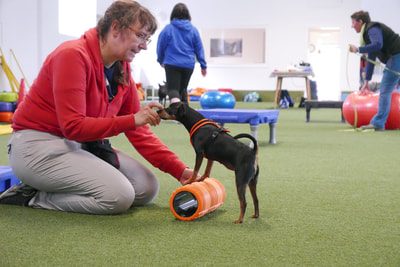
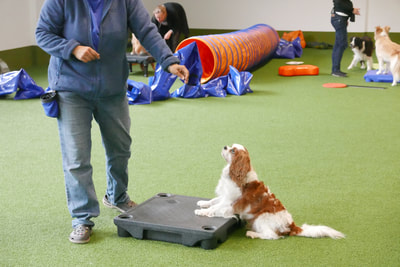
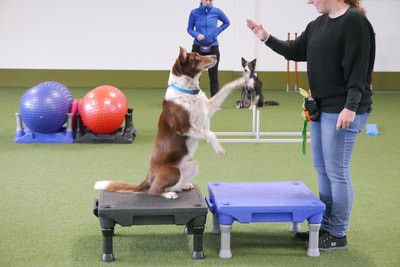
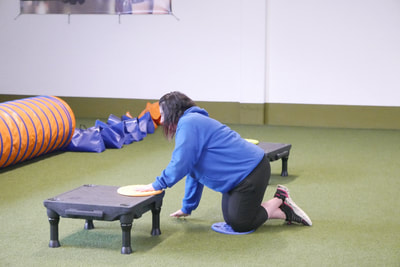

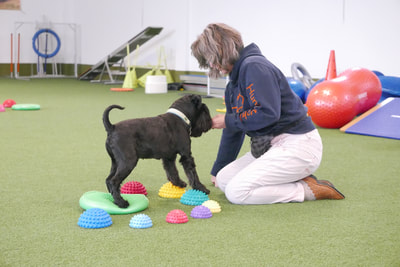
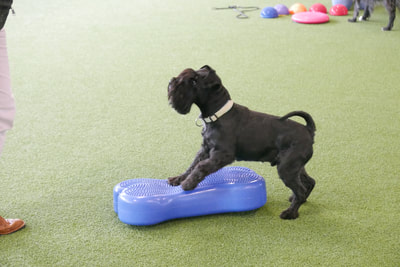
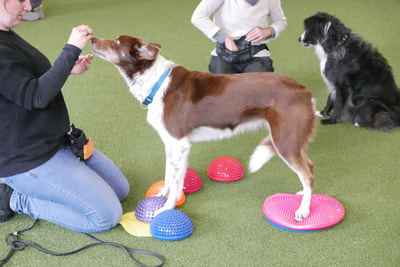
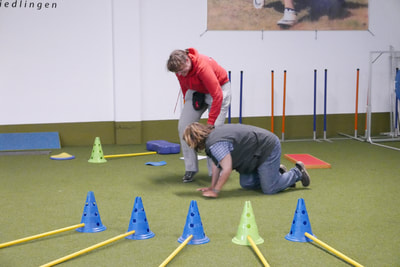
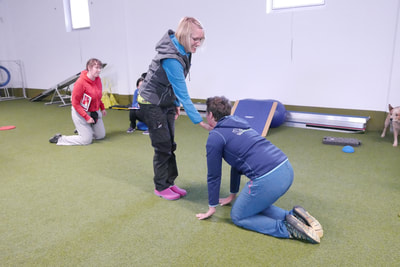
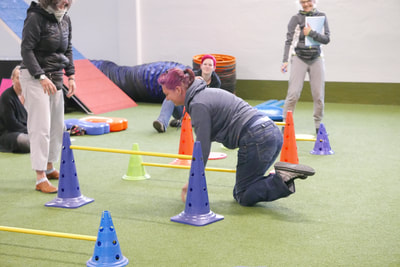
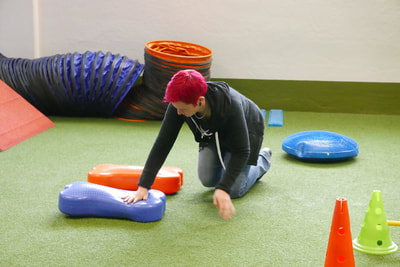
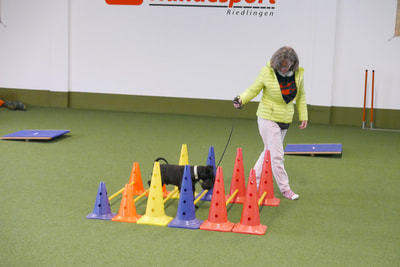
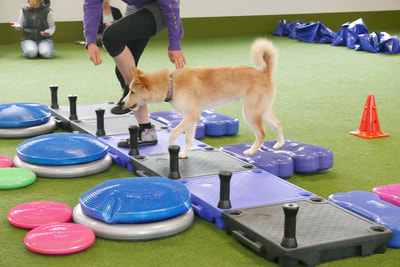
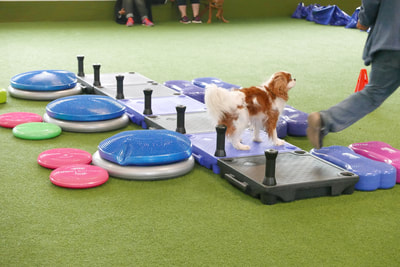
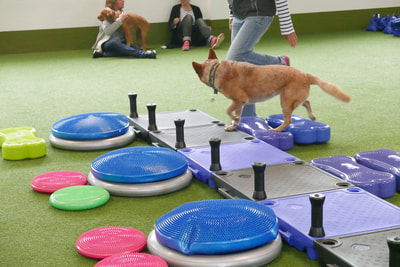
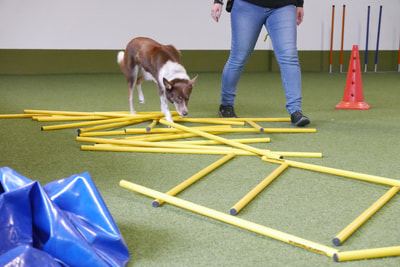
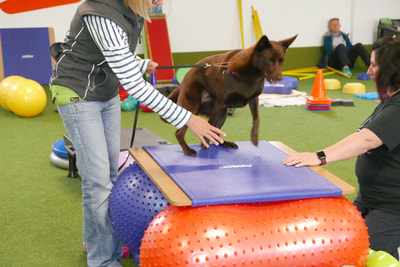
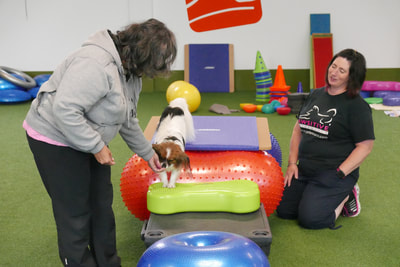
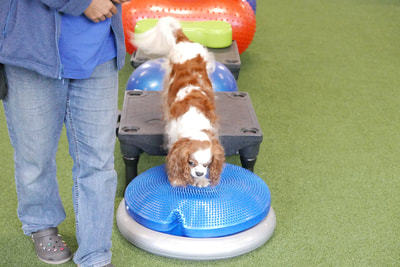

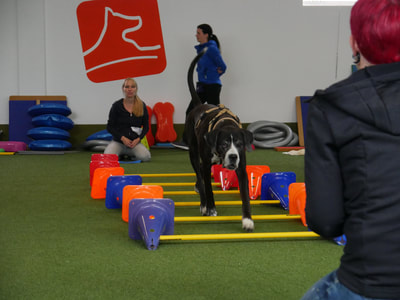
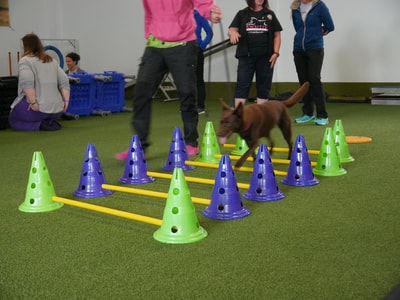
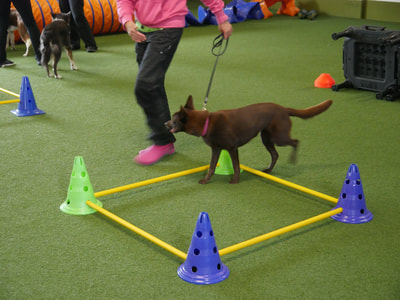
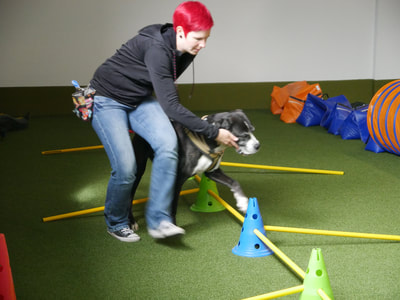
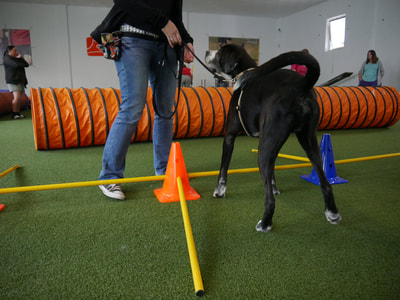
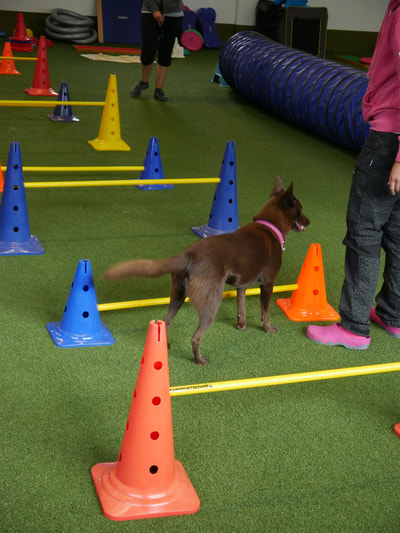
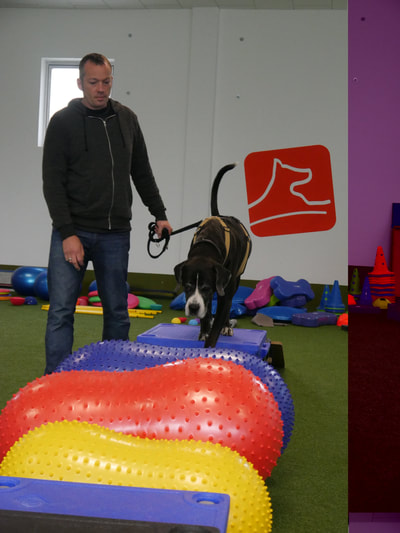
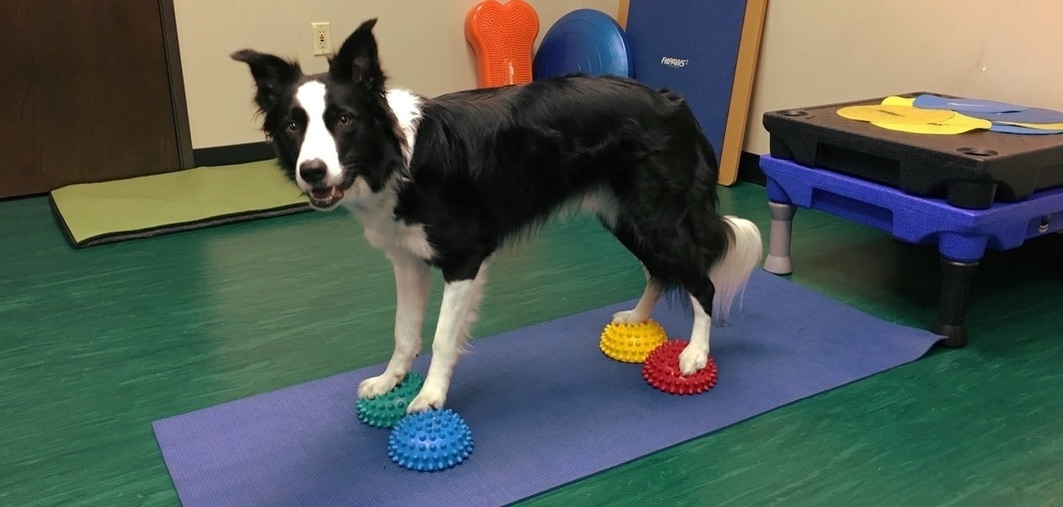
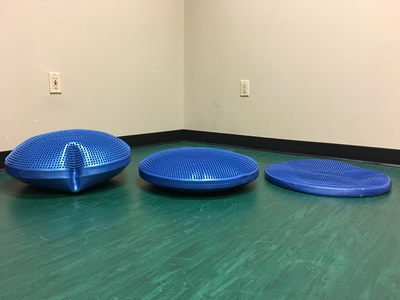
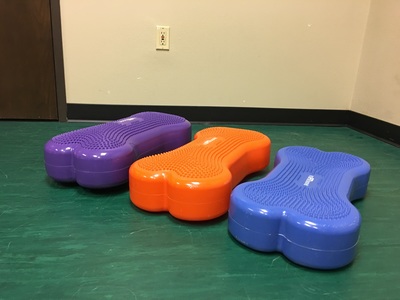
 RSS Feed
RSS Feed